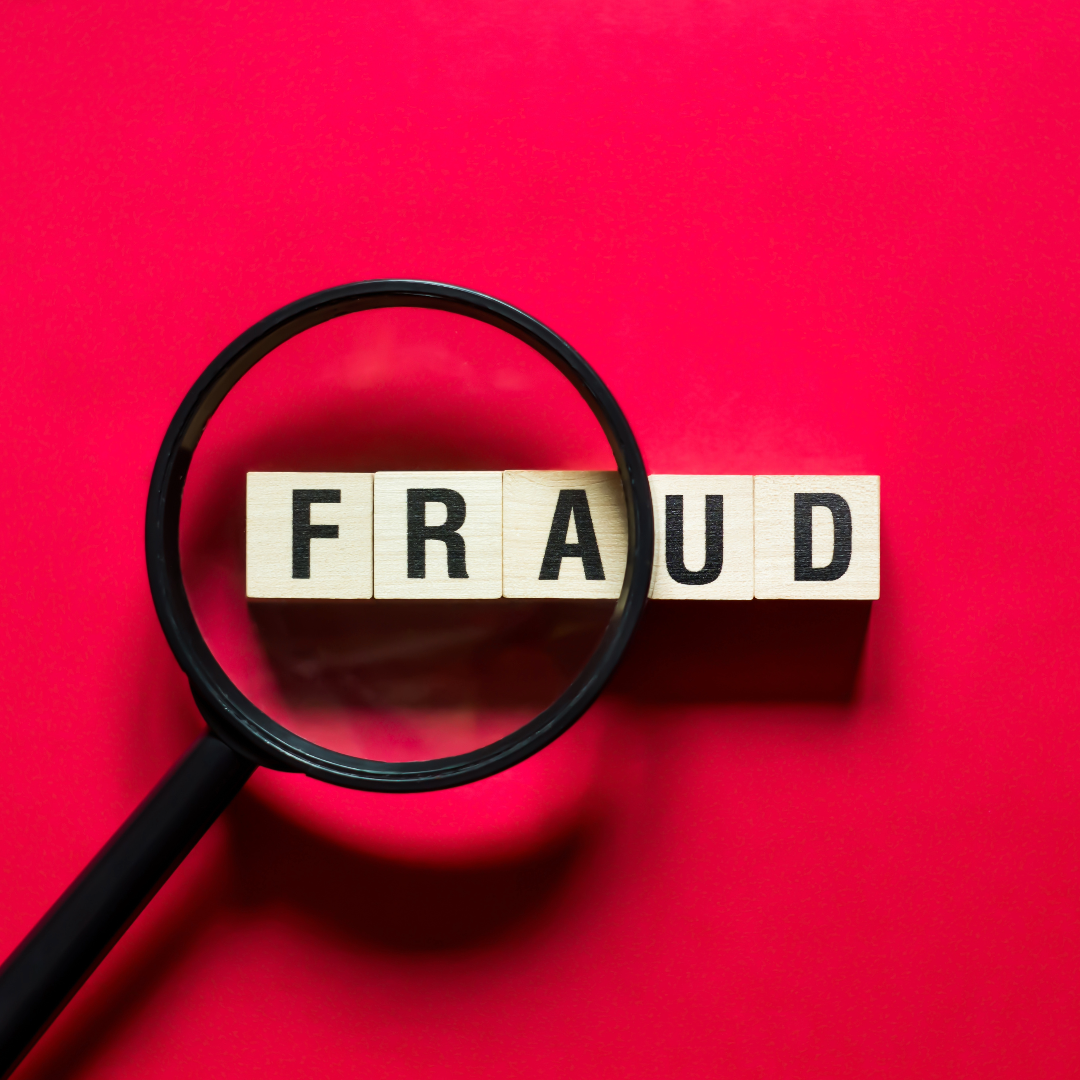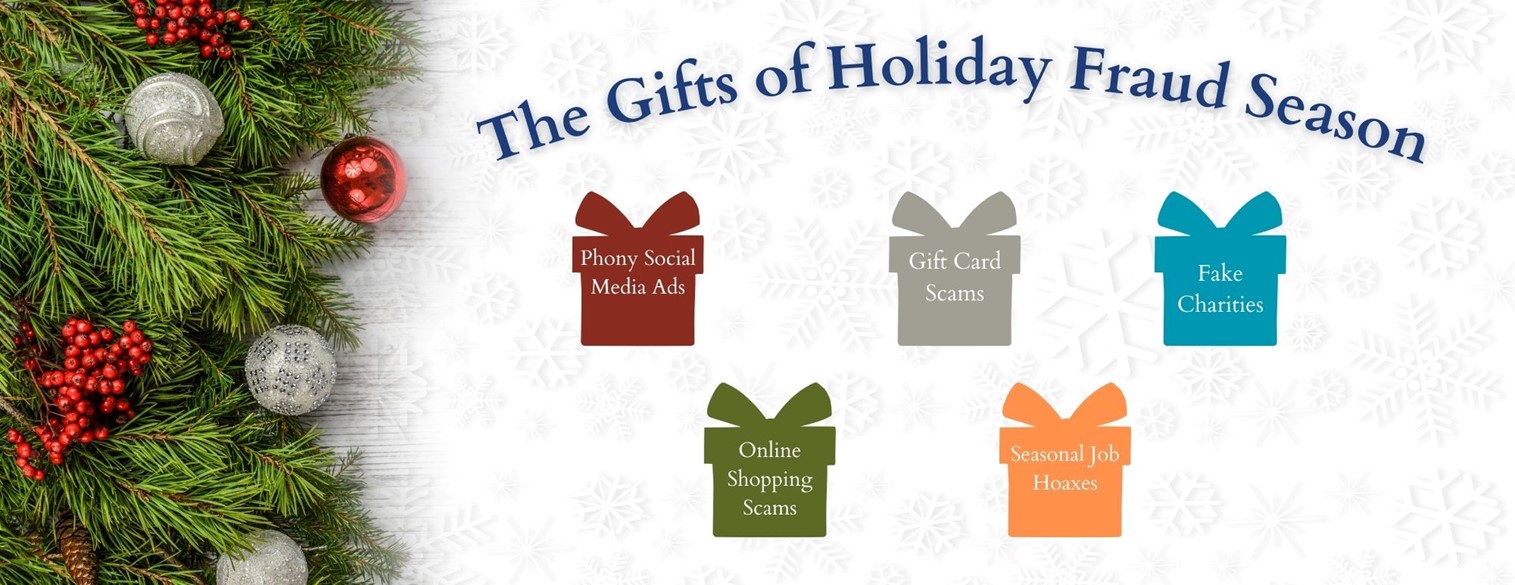Identity Theft Can Happen To Anyone
 | Identity theft headlines go in and out of circulation in a cycle that could lead some to believe the problem gets better, then worse, and then better again. However, identity theft crime statistics aren’t trending toward improvement. Reports released in 2023, covering the full year of 2022, showed identity theft-related losses of $10.2 billion, with 1,108,609 reported cases. This month, we’ll provide information for your account holders about how to know if their identity is at risk, what to do if their identity is stolen, and steps they can take to help themselves from becoming a victim of identity fraud in the future. We will also remind them that our professional Identity Recovery Advocates are available to ensure they’re on the road to recovery as quickly as possible. This topic is particularly important as we enter into the holiday season, the prime time for identity theft to occur. |
What is identity Theft?
Identity theft occurs when someone steals another person’s sensitive personal information and either uses it as their own or sells it on the black market for other perpetrators to use for financial gain or fraud. Identity theft has been making headlines for years; however, each and every year, thieves become more sophisticated. Staying in step with these criminal advances is a constant struggle for small business owners, corporations, and individual consumers alike. In spite of the work that is being done to keep our information safe, cases of identity theft continue to be reported at an alarming rate.
According to the Federal Trade Commission's Consumer Sentinel Report published in 2023 and covering the full year of 2022, reported cases of identity theft have increased by over 584% in the last 20 years. Other interesting data that came from this report:
Last year, 1,108,609 cases of identity theft were reported, and, perhaps surprisingly, people in their thirties were the highest percentage of victims (25.9%).
The median loss to fraud victims is $500, with total reported losses of $10.2 billion, a significant increase from the previous year's total of $6.9 billion in reported losses.
The most common type of identity theft was credit card fraud, which includes using stolen information to open a line of credit as well as using a legitimate card fraudulently.
Experts estimate that there is a case of identity theft every 22 seconds and that 33% of Americans will face this issue in their lifetime.
Red Flags
While safeguarding your personal information is key, so is knowing what to do if you find out that you have already become a victim of identity theft. First, you should know what red flags to watch out for, as time is of the essence when dealing with identity theft. The longer you wait to begin the recovery process, the more losses you risk facing. Early warning signs of identity theft can include:
- Finding unknown charges on your credit card or bank statement
- Receiving calls from collection agencies about debts you aren’t aware of
- Seeing unfamiliar withdrawals from your financial accounts
- Receiving bills for items you didn’t purchase or services you didn’t request
- Finding out that a tax return has already been filed in your name prior to filing your own
- Being unexpectedly denied on a loan application
- Receiving notification of a line of credit that you did not open
- Getting notifications or other information about government benefits or loans that you did not apply for
If any of the above signs apply to you, they should be addressed immediately. We have dedicated Identity Theft Recovery Advocates who are available to you as an <EMBEDDED ACCOUNT> account holder. They can help you assess what information has been compromised and assist in quickly stopping the damage and recovering your identity, regardless of the type of identity theft or how it happened.
The Case of the Weeping Widow
An 87-year-old widow was scammed for $70,000, including the purchase of a vehicle and application for a student loan. A police lieutenant had his personal information stolen and used in three separate instances of identity theft. The theft originated from data related to his childhood insurance coverage. A bank vice president discovered his identity had been used to open four credit cards, purchase a sports car, and rent an apartment. The thief had a driver's license featuring his own picture and the stolen information. These true stories are just a few examples of identity theft that could happen to anyone, regardless of age, occupation, financial status, or where you live. In each case, the victims learned about the crime after their information was stolen and had already been used multiple times.
|  |
Protection
Once you have addressed the immediate issues surrounding the theft of your personal information, there are a few things you can do to help protect your identity in the future.
- Regularly check your bills and financial statements. It’s common practice for scammers to make small purchases or withdrawals first to see if they can get away with it before attempting larger purchases or loans. Notify your financial institution immediately if you see a charge that you don’t recognize.
- Use unique passwords for each of your online accounts. If a hacker obtains your password for one account, they will likely pair it with your name or email address on other sites to see what else they can access. Consider using a trusted password service to help manage unique passwords for you. Changing your passwords regularly is another effective deterrent against scammers.
- Collect your mail daily and pay attention to recurring items, like bank and credit card statements, to ensure you don’t miss any. Some thieves take envelopes containing sensitive information out of mailboxes. If you are away from your home for an extended period of time, notify the postal service to hold your mail while you are gone. It is also a good idea to enroll in USPS Informed Delivery, a free service from the postal service that shows you preview images of incoming mail, plus status updates about your incoming and outbound packages.
- Monitor your Social Security account. Set up a free account with the Social Security Administration to help ensure your Social Security number isn’t fraudulently claimed by someone else.
Identity theft can happen to anyone, and its effects can range from a small annoyance to financial devastation. Prevention is The best protection, but if your information is used without your knowledge, we stand by to help. If you are an <EMBEDDED ACCOUNT> account holder and you think that you might be a victim of identity theft, contact us, and we will put you in touch with a professional Identity Theft Recovery Advocate.


As the holidays approach, many people are thinking about finding the perfect gift. Scammers are looking for ways to access your private information and ruin your holiday festivities. iTHINK Financial wants our members to be prepared for fraud by being able to identify schemes used by bad actors to steal your money, information, and holiday joy.
Be on the lookout for these common scams that increase during the holiday season:
- Online Shopping Scams: Too good to be true offers or deals through phishing e-mails or advertisements.
- Phony Social Media Ads: Bad actors will use social media sites to offer holiday promotions, vouchers or gift cards through the completion of surveys designed to compromise your personal information.
- Gift Card Scams: People receive a spoofed e-mail, call or text asking them to purchase multiple gift cards for personal or business reasons.
- Fake Charities: Fake charities are set up and profit from persons who believe they are donating to a legitimate organization. Verify a valid Taxpayer Identification number by calling the charity directly or visiting their website.
- Seasonal Job Hoaxes: Scammers pretend they're employees of recognized businesses and post help-wanted ads on social media platforms and popular websites, but links containing applications are fake and steal personal information.
Prevent being a victim of holiday fraud by:
- Use an iTHINK Financial VISA Platinum credit card when shopping online and check your statement regularly.
- Don’t click any suspicious links or attachments in emails, on websites, or on social media.
- Check each website’s URL to make sure it’s legitimate and secure.
- A site you’re buying from should have https in the web address. If it doesn’t, don’t enter your information on that site.
- Always get tracking numbers for items you buy online, so you can make sure they have been shipped and can follow the delivery process.
- Contact the credit union as soon as possible if you suspect or discover any fraudulent activity.
The holidays are a popular time to take advantage of unsuspecting or distracted shoppers. However, by familiarizing yourself with common seasonal scams, remaining vigilant, and being proactive if you suspect activity that would land someone on the naughty list, you can save yourself a lot of holiday headaches and financial fuss.
If you don’t currently have an iTHINK Financial VISA Platinum credit card, call us at 800-873-5100, online at ithinkfi.org, or visit your nearest branch.
eAlert/eStatements
iTHINK Financial is committed to your security and to protecting your information.
Set up free account notifications for account balances or debit/credit card transactions with eAlerts.
Step 1: Log in to Online Banking or our Mobile Banking App, click on eAlerts/eStatements from the slider menu option.
Step 2: Review and agree to the eMessenger User Agreement.
Step 3: Enter ‘Mobile Device’ information and click Continue. You are now registered for eAlerts and eStatements.
Under the Alerts tab, click on Manage Alerts to set up alerts.
Step 4: You will begin receiving notifications for your selected eAlerts immediately.
eAlerts allow you to set up account alerts for:
- ACH Credits
- Account balance changes
- Loan balance changes
- Loan payment due dates
- Certificate maturity
- Cleared checks
- ACH Debits
- Debit/Credit card transactions
- Daily Account Balance
- For unauthorized transactions, freeze your card by accessing Card Control via Online Banking or our Mobile Banking app and notify the Credit Union immediately.
Card Control at Your Fingertips
Use Card Control—Lock your iTHINK Financial debit or credit card so you don’t have to worry about someone else using your card. It’s free and easy to use, and you can unlock it yourself immediately, whenever or wherever you are.
Lock your card in Online Banking
Log in to Online Banking or the iTHINK Financial Mobile Banking app, then open the slider menu (3 horizontal lines on the upper left of the screen). Select the "Card Control" option and follow the prompts to lock your card immediately.
Please note that while locked:
- Automatic payments using the locked card will not be processed
- New transactions will be declined, including ATM withdrawals
- Card payments and refunds will still be posted to the locked card
- If your card was lost or stolen, please contact us to request a new card (or you can visit a branch to get your debit card instantly reissued)
You can unlock your card at any time in Online or Mobile Banking. Once unlocked you may need to reinstate automatic payments using your card if a payment was blocked while your card was locked.
If there are any unauthorized charges to your account, please contact the Credit Union at 800.873.5100 or serviceplus@ithinkfi.org.
Learn about our Credit Monitoring Service and Identity Theft Protection Program
Identity theft is a billion dollar business for thieves and a billion dollar loss for the rest of us. In fact, it is the most common type of consumer fraud complaint made by Americans. According to the FTC, cleaning up the mess after an identity theft has occurred costs the average consumer approximately $1,000.
To provide our Members with additional account safeguards, iTHINK Financial includes a comprehensive Identity Theft Protection Program and Credit Monitoring Service with our myChoice Checking account at no additional cost.*





